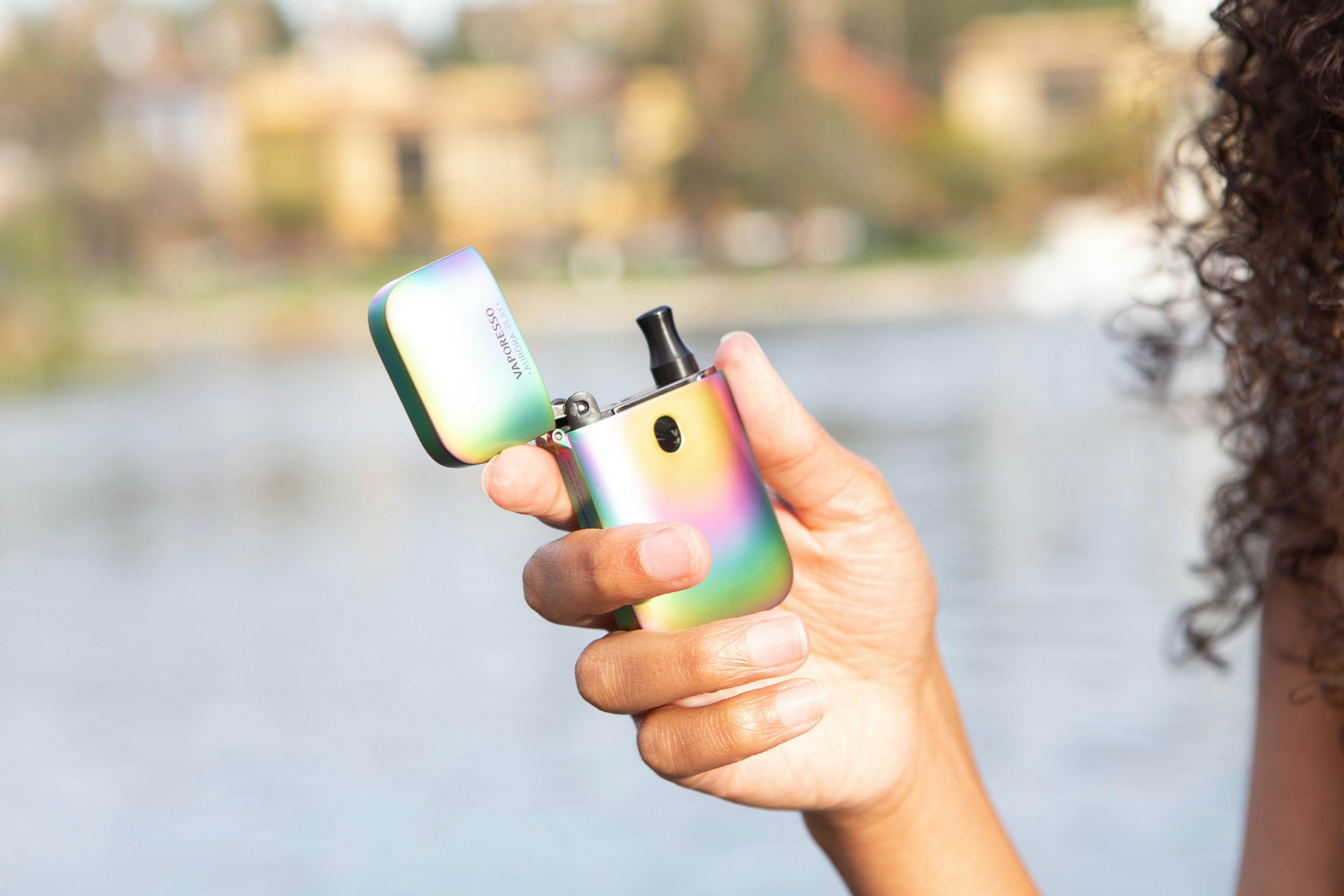Key Takeaways: This article provides a comprehensive guide to electronic cigarettes and vaping, covering various device types, ingredients in vape liquids, and potential health risks associated with vaping. It compares vaping to traditional smoking, discusses its limited efficacy for smoking cessation, and highlights the dangers of secondhand vape aerosol and its long-term effects. The guide also addresses the specific risks of vaping for young adults and offers resources for quitting.
Are you caught in the cycle of nicotine addiction, whether through traditional cigarettes or seemingly safer vaping? Understanding the facts about electronic cigarettes (e-cigs) and vapes is the first step towards making informed decisions about your health. Read on to learn more about whether vaping is worse for you than smoking, exploring everything from the different types of devices to the potential health risks and offering resources for quitting.
A Guide to Electronic Cigarette Types
How do electronic cigarettes work? E-cigs, also known as vapes, are battery-powered devices that heat a liquid called vape liquid or e-liquid into an aerosol that users inhale. But not all vapes are created equal. The different types are listed below.
Disposable Vapes
These pre-filled devices are designed for single use, offering convenience and a wide array of flavors. Brands like Elf Bar and Breeze have surged in popularity, particularly among young users, making up 55.6 percent of youth vaping devices. However, their environmental impact and impending bans in some regions, like the UK’s planned prohibition in June 2025, are raising concerns. Are disposable vapes addictive? The answer is a resounding yes due to their high nicotine concentrations and appealing flavors.
Refillable Pod Systems
Compact and user-friendly, devices like JUUL and Vuse utilize replaceable cartridges containing nicotine. They represent 15.6 percent of vape devices used by youth and offer the flexibility to customize nicotine concentrations.
Reusable Mods
Favored by experienced vapers, these larger, customizable devices feature refillable tanks, longer battery life, and greater control over vapor production.
Regardless of the type, the fundamental mechanism remains the same: a battery heats a coil, which then vaporizes the e-liquid for inhalation. While this process avoids burning tobacco, it doesn’t eliminate the health risks.
What Is in Vape Liquid and e-Cigarettes?
Understanding e-cigarette ingredients is paramount. Vape liquid typically consists of propylene glycol, vegetable glycerin, flavor additives, and, most commonly, nicotine. However, a more comprehensive breakdown is listed below.
Nicotine
While some vapes are marketed as “nicotine-free,” independent testing has revealed that many of these products contain detectable nicotine, with some exceeding legal limits. This is particularly concerning, as nicotine addiction from e-cigarettes can disrupt adolescent brain development and perpetuate addiction. Do vapes contain nicotine even if labeled “nicotine-free”? Unfortunately, the answer is often yes, highlighting the deceptive marketing practices within the industry.
Flavor Chemicals
With over 7,000 flavor compounds available, enticing flavors such as fruit, candy, and mint are particularly popular, especially among young users. However, when heated, these chemicals can break down and produce harmful carbonyls, such as formaldehyde. Additionally, compounds like diacetyl have been linked to a condition known as “popcorn lung.” Risks of flavored e-liquids extend beyond just appealing to youth; they can directly damage your lungs.
Heavy Metals and Particulates
Vape aerosols can contain heavy metals such as lead and nickel, as well as ultrafine particles (PM2.5) that can penetrate deeply into lung tissue, causing inflammation and DNA damage.
These components contribute to a range of vape dangers, including impaired lung function, cellular damage, and increased cardiometabolic risks.
Vaping vs. Smoking: A Comparative Analysis
The question on many minds is: Are vapes safer than traditional cigarettes? The answer is complex. While vaping eliminates tobacco combustion, reducing exposure to specific carcinogens, e-cigarette aerosols contain unique toxins not found in cigarette smoke, such as nickel nanoparticles.
Comparing vaping vs. smoking health effects reveals some critical differences:
- Smokers have an 8 times higher risk of COPD mortality compared to non-users, while exclusive vapers also face an elevated, albeit lower, COPD risk.
- Dual use of vaping and smoking carries the highest risk of cardiometabolic disease.
- Vaping can deliver nicotine more efficiently than cigarettes, potentially leading to higher peak nicotine levels and reinforcing addiction.
So, is vaping worse than smoking? For those who have never smoked, initiating nicotine use through vaping carries inherent risks. For smokers transitioning exclusively to vaping, it may reduce harm, but it’s crucial to understand that it’s not risk-free. What are the health risks of electronic cigarettes? The answer depends on individual circumstances, but neither is a safe option. So, is vaping worse than smoking? Both habits pose significant health risks.
Vaping for Smoking Cessation: A False Hope?
Can vaping help you quit smoking tobacco? While some believe vaping can be a stepping stone to quitting, the evidence is mixed. A 2025 study of 6,013 smokers found that daily vapers had significantly lower cessation rates compared to non-vapers. Many smokers become dual users, delaying complete cessation.
Is vaping worse than smoking? Both pose significant dangers. It’s important to note that no e-cigarette is currently FDA-approved as a cessation aid due to insufficient evidence of long-term efficacy. More effective cessation tools include nicotine replacement therapy (NRT) and quitlines, which offer counseling and free NRT.
Is Secondhand Vape Aerosol Harmful?
Many wonder if secondhand vape aerosol is harmful. Emerging research confirms that it is. Secondhand aerosols emit particulate matter and expose bystanders to nicotine and volatile organic compounds (VOCs). This justifies extending smoke-free policies to include vaping in enclosed spaces.
What Are the Long-Term Effects of Vaping?
What are the long-term effects of vaping? Longitudinal studies are beginning to paint a clearer picture:
- Chronic use is associated with persistent cough, wheezing, and a more rapid decline in lung function.
- Exclusive vapers face a higher risk of developing COPD.
- Studies show elevated hypertension risk, particularly in adults.
Further research is crucial to understanding the long-term consequences of vaping.
Protecting Our Youth: Dangers of Vaping for Young Adults
The dangers of vaping for young adults are particularly concerning. Teens are more vulnerable to nicotine addiction, with many vaping frequently or even daily. Nicotine can disrupt brain development, impairing attention and impulse control. Furthermore, teen vapers are more likely to start smoking traditional cigarettes. What is the legal age to buy vapes? In the US, it’s 21, but enforcement challenges persist.
Regulations on Electronic Cigarette Sales
Regulations on the sale of electronic cigarettes vary globally. The FDA bans sales to individuals under 21 and prohibits the sale of unauthorized flavored pods. However, illicit products still flood the market. Vape safety claims should be approached with skepticism, as “nicotine-free” labels are often inaccurate, and there are no regulatory standards for flavoring safety.
Quitting Vaping Resources and Tips
If you’re ready to quit vaping, know that you’re not alone. Quitting vaping resources and tips include
- Behavioral support: Utilize quitlines like 1-800-QUIT-NOW, which offer counseling and NRT.
- mHealth tools: Explore text-based programs that provide cessation support.
- Non-nicotine alternatives: Consider cognitive-behavioral therapy to break the habit.
Is vaping worse than smoking? More research is needed; however, for young people and non-smokers, the dangerous side effects of vaping can be more profound. For smokers struggling to quit, exclusive vaping might be a less harmful alternative, but cessation remains the ultimate goal.
If you or a loved one is struggling with addiction, Mountainside can help.
Click here or call (888) 833-4676 to speak with one of our addiction treatment experts.

 By
By 







